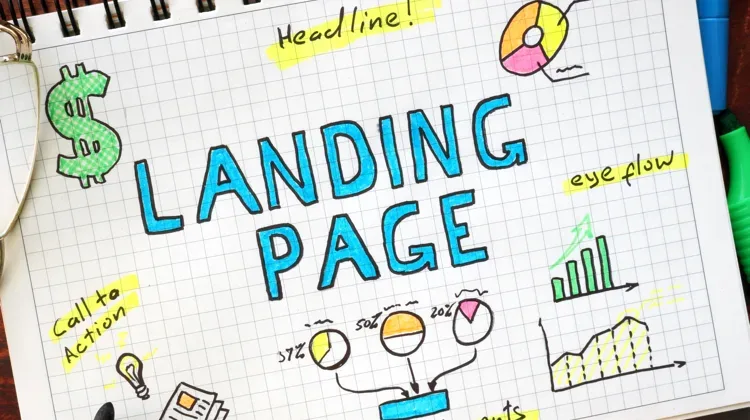
A landing page can be one of the most important pages on your client’s website. But what makes for great landing page copywriting?
A landing page is, very simply, the page that a visitor lands on after they’ve taken an action you wanted them to take—such as clicked on a Facebook ad. On that landing page, you’ll also have another action you want them to take; it might be to sign up for an e-book, enroll in a webinar, enter a giveaway, or even make a purchase.
A landing page contains an action that is important to your client’s business. (If it weren’t then why would they send traffic to it?) And, so, it’s important that you make it as impactful as possible.
Determine the Desired Action
When you’re writing a landing page, you need to know what the desired action is: What do you want the visitor to do? That means all the landing page copy needs to be singly focused on getting the visitor to take that action.
Remember that even though a visitor chose to visit this page, it doesn’t mean he or she is invested in staying on the page. You need to make your copy as powerful and enticing as possible, and you also need to make it as concise as you can.
Clearly Convey the Benefit to Taking the Action
Immediately, your headline needs to convey a clear and powerful benefit to taking the action. If you want people to buy an e-book, for example, and the e-book is about career planning, your headline might be “Never Ask for a Raise—But Always Make 25% More Money Every Year!”
While you have to stay within the brand voice, you need to immediately make your headline as compelling as possible. Then, you may need to follow that up with more details in a subhead. This could be something like, “Download our e-book to learn the easy, six-step process to maximize your earnings on the job.”
The level of additional details in the body copy will depend on how big of an action it is you’re asking the visitor to take. If you’re asking them to make a purchase, often you’ll need to add in plenty of detail to overcome their objections to purchasing. (But still—remember to be concise!)
If you’re asking them to take an easier action, like sign up for a free e-book or a free webinar, the barrier to action is lower (since it’s free), but you’ll still need some compelling details.
Break Down Your Big Benefit
The body copy is a great place to break down your big benefit into features and smaller benefits. You might write something like:
“Download our free e-book to learn:
– Why promotions are the wrong way to advance your career
– How to use your company’s job listings to make yourself indispensable
– How to ensure that you’re always making much more money, year after year”
Bullets, by the way, are a great way to organize information to make it easily scannable for the visitor. Some people will want to carefully read all the landing page copy—but many won’t. You need to make it as easy for people to get through your copy as possible.
Include Elements to Help People Take Action
Next, include any additional—but essential—elements to help people make the decision to take the desired action. This might include testimonials, excerpts, guarantees, or any number of things. The key, again, is that they must be powerful and they must have an impact.
Extra copy never helps people take action—it only hinders them.
Write a Clear Call to Action
Finally, your call to action must be clear, it must be specific, and it must give visitors a clue as to what’s going to happen next. For example, “Learn More” is a great call to action if it goes to a page where people can get more information. But it’s a terrible call to action if it triggers a pop-up box where people have to input their information.
“Contact us” is a great call to action if it goes to a contact page or contact form. It’s a terrible call to action if it goes to a page where people have to schedule a call. (What would be a good call to action there? Just “Schedule your free call now.” Don’t complicate your call to action.)
Your call to action is also not the place to cram in other details. “Download our free e-book!” is great; “Download our free, 200-page e-book in three e-book formats for easy reading!” is not.
As with copywriting anything, the principles are not the biggest challenges; applying them is. It probably will—and probably should—take you several drafts and rounds of self-edits to get to a great document with compelling landing page copy.
But the difference between a mediocre landing page and a great one is huge, and it will make a tremendous difference in your client’s business…and in their value of you and your skills.
Your Turn!
Have you written a landing page? What successes did you have or missteps did you make? Let us know in the comments below!
Last Updated on July 4, 2023
Leave a Reply